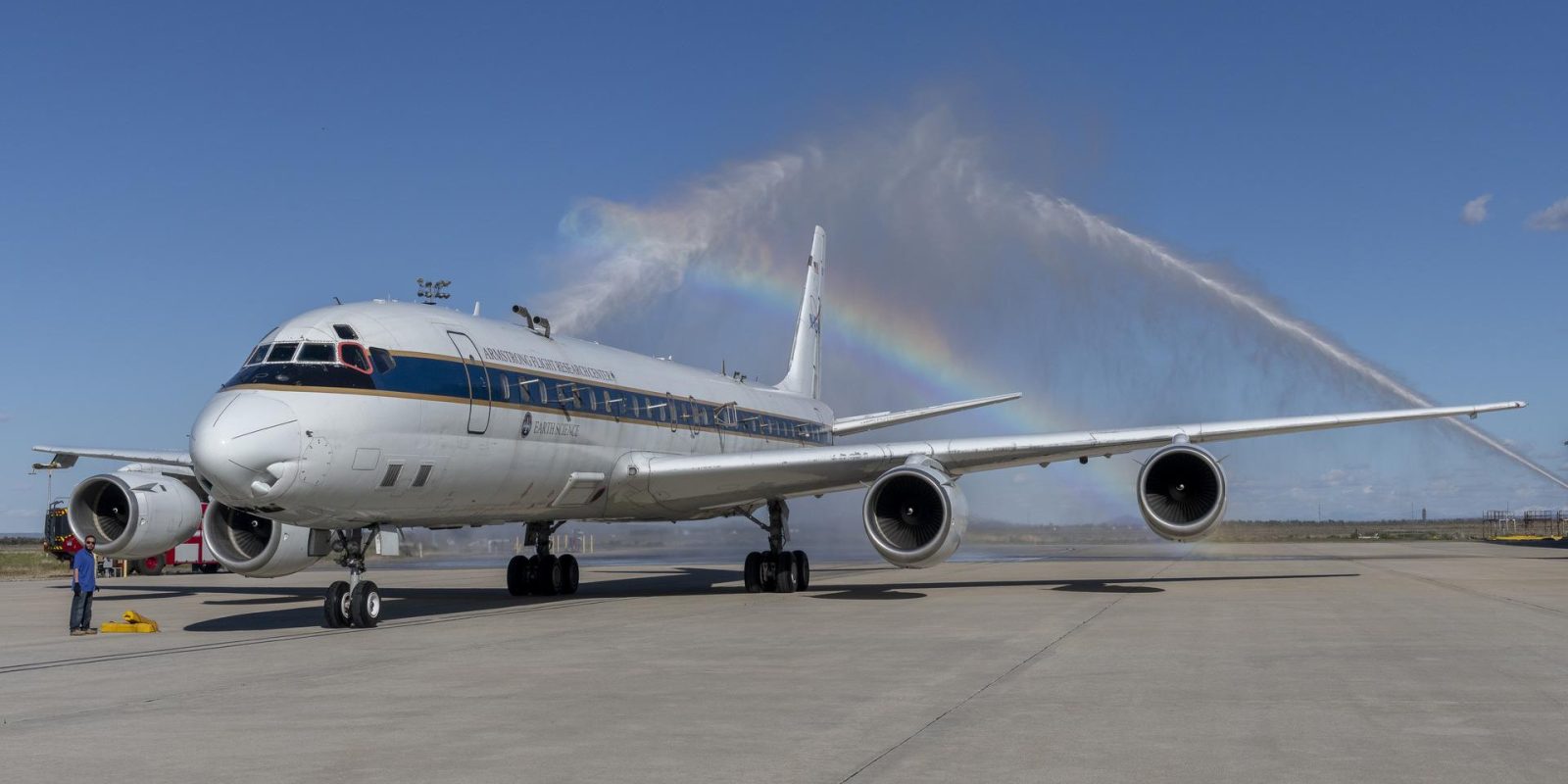
After flying for over 50 years, NASA’s DC-8 aircraft was flown to Idaho State University with preparation to decommission it and hand it over to the university. The long serving research aircraft has served many roles for NASA but is most known for its Earth science missions.
Built in 1969, NASA’s DC-8 started life with Alitalia airlines then moved to Braniff International before being purchased by NASA in 1985. The aircraft received new engines and modifications for use as a research plane, putting its passenger transportation days behind it.
It played a big part in testing satellite components before their launches in space. It would also fly beneath a satellite’s path to verify science observations of said satellites. However, its main use has been with NASA’s Earth Sciences program, conducting research flights for decades for various projects.
While the novelty of having one of only a few flying DC-8s within their fleet is nice, NASA has run into trouble justifying the cost of repairing, training, and operating the aging aircraft. Recently, NASA acquired a Boeing 777 to replace the DC-8, which completed its final mission on April 1.
NASA’s DC-8 will be given to Idaho State University’s Aircraft Maintenance Technology Program and will provide hands on experience for students there.
The DC-8 is one of many aircraft NASA operate for research purposes. The agency operates a P-3 out of Wallops Flight Facility, several high altitude WB-57s which you might know from their work documenting rocket launches and aircraft reentry, and a plethora of Gulfstream and Beechcraft variations.
This doesn’t include NASA’s fleet of other testing and transportation aircraft, like a few F-15s and F/A-18s, T-38s for its astronaut corp, Gulfstreams for its executive leadership, and the Super Guppy for large cargo.
FTC: We use income earning auto affiliate links. More.


Comments